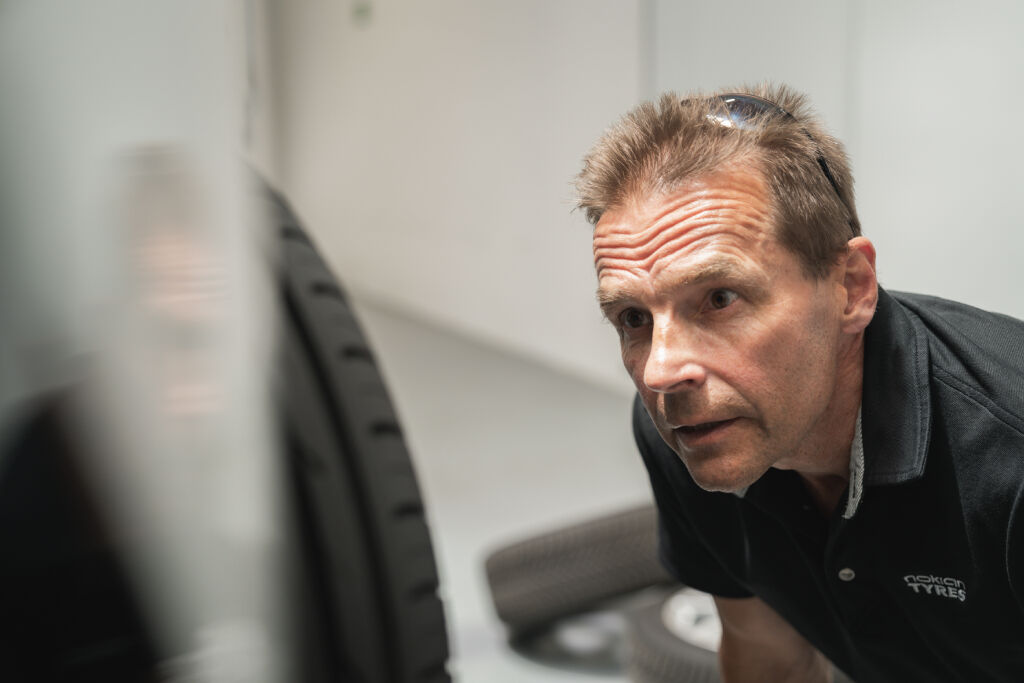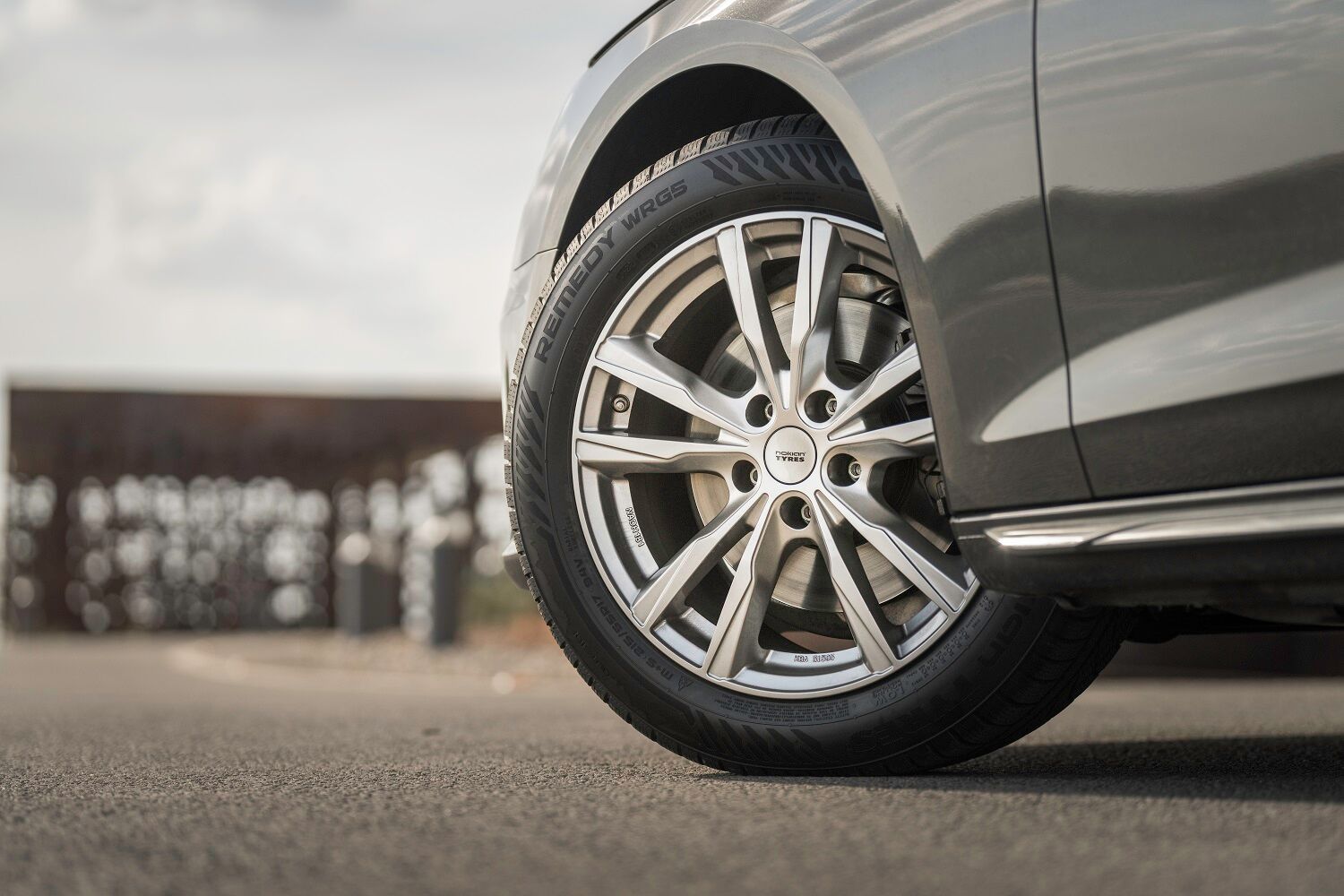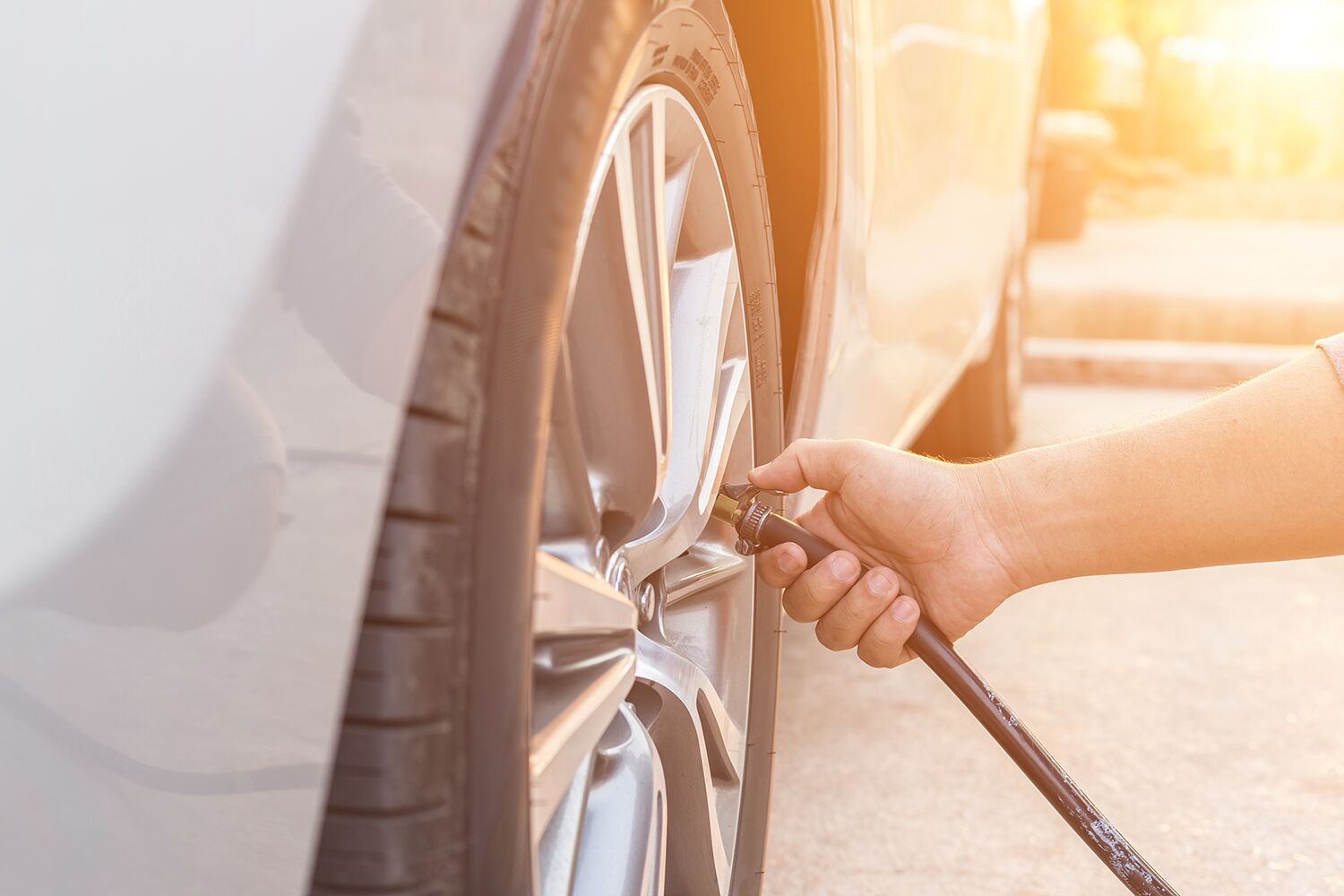
How should you take care of your tires? Read our tips for tire maintenance and ensuring that your tires stay in good condition.
Tire maintenance is a must-know skill for all car owners and an essential aspect of vehicle upkeep. By inspecting and maintaining tires regularly you can reduce premature and uneven wear, while also improving safety in traffic. Regular tire maintenance helps you identify when to replace your tires and search for a new set. When your old tires have reached the end of their service life, visit your local Nokian Tyres dealer and find the right tires for your vehicle.
Why is tire maintenance important?
There are many benefits to regular tire inspection and maintenance. When done properly, taking care of your tires benefits you, other people in traffic, and even the environment. Some benefits of tire maintenance include:
- Improved safety. Well-maintained tires provide better grip and handling, helping to reduce the risk of accidents.
- Increased fuel efficiency. Under and overinflated tires can increase the tires’ rolling resistance and, therefore, your fuel consumption. Smoothly rolling tires are better for the environment and your wallet, thanks to reduced fuel consumption.
- Extended tire lifespan. Regular maintenance extends the lifespan of your tires, so you don’t need to buy new tires as often.
- Better driving experience. Well-maintained tires perform better, which makes handling more stable and predictable. You can also experience lower tire noise as a result of proper tire maintenance, which improves driving comfort.

Tips for regular tire inspection and maintenance
Proper tire maintenance involves various aspects of your tire, including tire pressure, tread depth, and tire rotation. Here's how you should be checking on these regularly:
Tire Pressure
Correct tire pressure is vital for vehicle safety, performance, and fuel efficiency. Make sure to check your tire pressure before long trips, in addition to regular monthly checks.
Underinflation can lead to poor fuel economy and premature tire wear, while overinflation can lead to decreased traction and increased risk of tire damage. When your tires are underinflated or nearly flat, it can be difficult to feel it on the road. If you have been driving with underinflated tires, there might be damage to the inner parts of the tire you cannot see. It's hard to tell whether your tires are properly inflated just by looking at them, so try to make checking your tires for proper tire pressure a monthly routine using a pressure gauge. You can usually find a tire gauge at a service or gas station. Learn more about tire pressure monitoring systems (TPMS) here.
The correct air pressure recommended for your tires can vary depending on the type of vehicle you drive, so refer to your vehicle's manual for guidance. Remember that temperature changes can affect tire pressure. You should check your tire pressure when tires are cold – in other words before you’ve driven on them. Driving even a short distance causes tires to heat up and air pressure to increase. Read more about tire pressure here.
Tire Rotation
Tire rotation involves moving tires from one position on the vehicle to another to help the tires wear more evenly. Tire rotation patterns vary depending on your vehicle. For example, you can rotate your tires by changing their position from the rear axle to the front.
We recommend rotating your tires every 4,000–6,000 miles (6,430 - 9650 km) for optimal performance. Lining up tire rotations with regular oil changes (on vehicles with combustion engines) is common practice by many drivers. Signs that it's time for a tire rotation include uneven tire wear and vibration at high speeds.
Tire Tread Depth
Tire tread depth plays a significant role in vehicle safety and performance, particularly in wet conditions. As your tires wear in use, the tread pattern’s depth is reduced, leading to less grip and traction on the road. You can measure your tire's tread depth using a tread depth gauge or a coin. The minimum legal tread depth is 2/32 of an inch (about 1.6 mm). However, safe performance and handling is extremely compromised at minimum legal tread depth. Seasonal weather conditions also play a role in recommended tire tread depth. For winter tire tread depth, it's safest to ensure a tread depth above 6/32" (~5 mm) ahead of the winter season.
If your tires are below recommended tire tread depth thresholds, or if they show signs of uneven wear, it's time for a replacement. Remember to check all four tires regularly for uneven tread wear.
Preventing Uneven Tire Wear
Uneven tire wear is a common issue that can be a result of misalignment, improper inflation, or lack of rotation. Even tread wear ensures a longer service life for your tires while improving road safety. You can identify uneven tire wear by visually inspecting your tires for uneven patterns. If detected, it's essential to address the underlying cause and replace the tires if necessary. Consult a local tire shop with questions, or schedule an appointment for professional assistance.

Additional tire maintenance tips
In addition to our best practices outlined above, here's a tire maintenance checklist to help you get the best possible experience with your vehicle’s tires:
- Storage. Storing your tires indoors in proper conditions can help extend tire life and prevent their quality from degrading.
- Wheel alignment and balancing. Correcting misalignment and regular tire balancing can contribute to more even tire wear and improved vehicle handling.
- Visual inspections. Check the tires for any visible damage or foreign objects lodged in the tires and remove them when necessary.
- Driving habits. Aggressive driving, such as sudden braking and acceleration, can lead to faster tire wear.
- Correct tire type. Using the right tires for the season enhances vehicle performance and safety. For winter driving conditions, use tires that are rated for winter with the three-peak mountain snowflake symbol (such as Nokian Tyres winter or all weather tires).
- Tire age. The service life of car tires is typically around 6 years in service or 10 years from date of manufacture, whichever comes first. Even if your tires are not worn out, they should be replaced every 6 to 10 years due to potential rubber degradation that comes with tire aging.
- Spare tire. Make sure to inspect your spare tire as well by adjusting its tire pressure and checking its tread depth and manufacture date, whether you have a full-sized spare or a miniature.
Regular tire maintenance can lead to lower fuel consumption and help prevent tire damage, such as a flat tire due to improper air pressure. You also get to enjoy driving longer with the same set of tires if you take care of them. However, no tire drives safely forever, so change to high-quality premium tires once it’s time for a new set. Find a set of Nokian Tyres all season tires, all weather tires, all terrain tires, or winter tires for your vehicle from a tire shop near you:
Please remember that it is the driver’s responsibility to ensure their tires are safe and suitable for their vehicle and to follow the vehicle’s manufacturer´s guidelines for proper use and maintenance. Consult your closest Nokian Tyres dealer or your vehicle’s manufacturer for specific advice.


